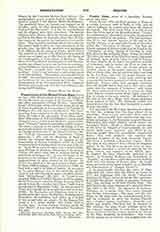
Feast of the Presentation of the Blessed Virgin Mary
Mary, at the age of three, was brought by her parents to the Temple, in fulfilment of a vow, there to be educated

Presentation of the Blessed Virgin Mary, FEAST of THE.—The Protoevangel of James, the Gospel of Pseudo-Matthew, the Gospel of the Nativity of Mary, and other apocryphal writings (Walker, “Apocryph. Gosp.”, Edinburgh, 1873) relate that Mary, at the age of three, was brought by her parents to the Temple, in fulfilment of a vow, there to be educated. The corresponding feast originated in the Orient, probably in Syria, the home of the apocrypha. Card. Pitra (Anal. Spici. Solesmensi, p. 275) has published a great canon (liturgical poem) in Greek for this feast, composed by some “Georgios” about the seventh or eighth century. The feast is missing in the earlier Menology of Constantinople (eighth century); it is found, however, in the liturgical documents of the eleventh century, like the “Calend. Ostromiranum” (Martinow, “Annus graeco-slay.”, 329) and the Menology of Basil II (Greek: eisodos tes panagias Theotokon). It appears in the constitution of Manuel Comnenos (1166) as a fully recognized festival during which the law courts did not sit. In the West it was introduced by a French nobleman, Philippe de Mazieres, Chancellor of the King of Cyprus, who spent some time at Avignon during the pontificate of Gregory XI. It was celebrated in the presence of the cardinals (1372) with an office accommodated from the office chanted by the Greeks. In 1373 it was adopted in the royal chapel at Paris, 1418 at Metz, 1420 at Cologne. Pius II granted (1460) the feast with a vigil to the Duke of Saxony. It was taken up by many dioceses, but at the end of the Middle Ages, it was still missing in many calendars (Grotefend, “Zeitrechnung”, III, 137). At Toledo it was assigned (1500) by Cardinal Ximenes to September 30. Sixtus IV received it into the Roman Breviary, Pius V struck it from the calendar, but Sixtus V took it up a second time (September 1, 1585). In the province of Venice it is a double of the second class with an octave (1680); the Passionists and Sulpicians keep it as a double of the first class; the Servites, Redemptorists, Carmelites, Mercedarians, and others as a double of the second with an octave. In the Roman Calendar it is a major double. The Greeks keep it for five days. In some German dioceses, under the title “Illatio”, it was kept November 26 (Grotefend, III, 137).
F. G. HOLWECK

